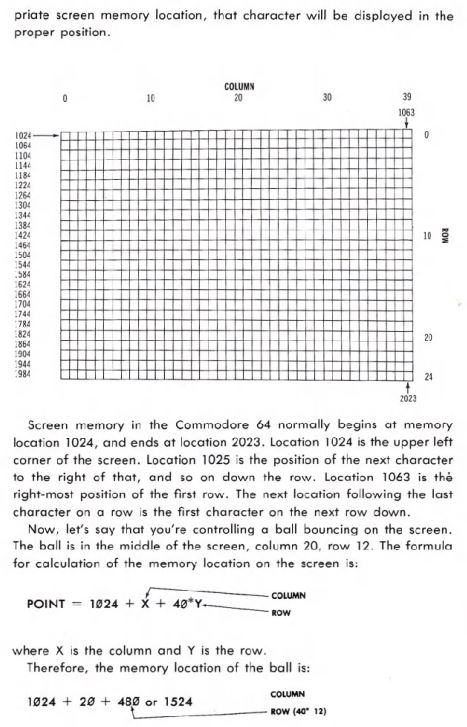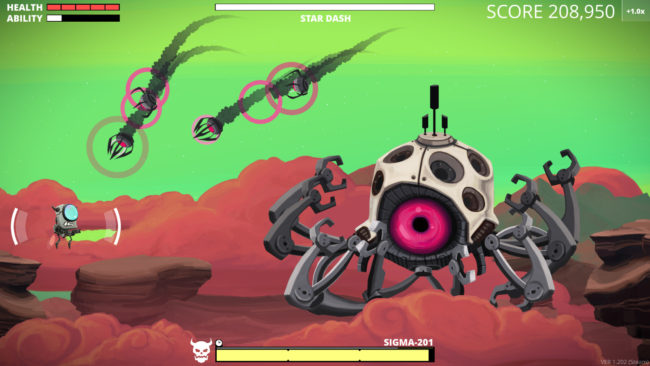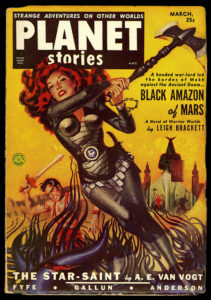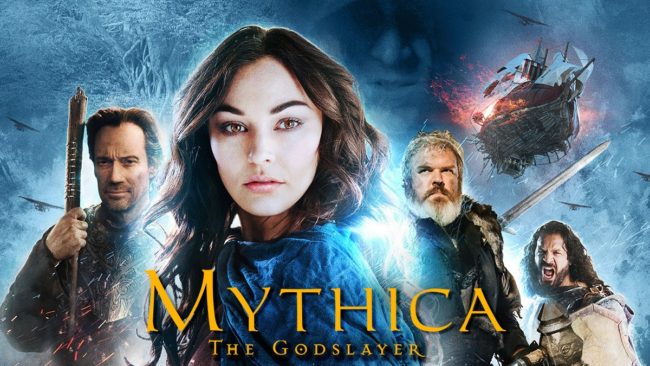The VR War Expands to Consoles?
Posted by Rampant Coyote on June 14, 2016
 Sony has confirmed a new-and-more-powerful version of the Playstation 4, called the Neo. Fully compatible with PS 4 games and peripherals (and vice versa), the main thrust of the Neo seems to be to support enhanced visuals, gaming on 4K screens, and their upcoming VR system. Considering that 4K screens are so “last year” and haven’t gotten much traction yet (we’re still growing into our 1080ps!), I consider that one to be a little bit more of a hedge and wishful thinking, with the real emphasis being making sure that their VR – coming out in October this year – doesn’t suck.
Sony has confirmed a new-and-more-powerful version of the Playstation 4, called the Neo. Fully compatible with PS 4 games and peripherals (and vice versa), the main thrust of the Neo seems to be to support enhanced visuals, gaming on 4K screens, and their upcoming VR system. Considering that 4K screens are so “last year” and haven’t gotten much traction yet (we’re still growing into our 1080ps!), I consider that one to be a little bit more of a hedge and wishful thinking, with the real emphasis being making sure that their VR – coming out in October this year – doesn’t suck.
Microsoft has countered with their own mid-generation upgrade, Project Scorpio. Again, it’ll be fully compatible with the Xbone library, just more powerful. And should work better with their VR solution… quite likely something that evolves out of their partnership with Oculus VR.
This “mid-generation upgrade” is pretty unusual. Sure, we normally get stuff like new peripherals and new form-factors… like Microsoft’s newly-minted Xbox One S. But a major horsepower upgrade is pretty new to me.
But VR is potentially the new thing, and it demands more horsepower. 2016 might be the year of consumer VR, but 2017 or 2018 may be the year it goes mainstream.
Filed Under: Mainstream Games, Virtual Reality - Comments: 4 Comments to Read
2D Game Programming: Why, Y?
Posted by Rampant Coyote on June 13, 2016
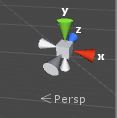 I have a problem programming in modern game engines in 2D. It’s weird, it’s embarrassing, and it trips me up constantly even when I think I’m being careful. And I finally figured out why.
I have a problem programming in modern game engines in 2D. It’s weird, it’s embarrassing, and it trips me up constantly even when I think I’m being careful. And I finally figured out why.
My problem is Y.
Now, let me preface this by saying I don’t have this problem when doing 3D coding. It’s because 3D is something else entirely. Depending on what coordinate system you use, X and Y might be on a horizontal plane, and Z is up. Or X and Z are horizontal, and Y is up. Something like that. Although this can trip me up from time to time as I switch between different engines and tools (left-hand versus right-hand coordinate systems). But my brain shifts when I’m doing 3D.
 When I’m doing 2D, I always think of positive Y as going down. Which doesn’t make sense, if you have ever graphed on an X, Y plane in school. Unless told otherwise, you always graph in that first quadrant, with X going to the right and Y going up on the paper. Right?
When I’m doing 2D, I always think of positive Y as going down. Which doesn’t make sense, if you have ever graphed on an X, Y plane in school. Unless told otherwise, you always graph in that first quadrant, with X going to the right and Y going up on the paper. Right?
You could include all four quadrants and going into negative numbers. But hey, for our purposes, we’re just confining ourselves to positive values. So, naturally, when you are talking about 2D graphics on a screen, if you want to move an object to the right, you increase its X value. If you want to move it up, you increase its Y value. Easy, right?
Yeah, it is. However, I have a weird dyslexia of the vertical axis. When I’m not paying enough attention (and sometimes even if I am), I’ll make assumptions that positive Y is DOWN. I’ll subtract from Y to try to make an object move up (or check what’s above it on a gridded map). This causes some really weird bugs in my code, sometimes, because I’ll do it right in most of the places and then accidentally invert the sign in some obscure corner of the code.
The reason, once I thought about it, was pretty obvious.
This was how the screenspace memory worked on the Commodore 64:
See how that worked? Every row was an increase in Y value. Y got bigger as you went down. It wasn’t just screenspace. This was how you designed character-mapped graphics (and, for that matter, sprites) on the ol’ C-64:
This wasn’t limited to the old Commodore 64. This was true in the DOS days and on many computers. In fact, you could look back on the trusty ol’ Atary VCS / 2600 from the 1970s to catch a glimpse of the rationale here. From the book Racing the Beam:
The Atari 2600 shared a problem with my very first computer – a Sinclair ZX80 – in that there was no “memory mapped video” (AKA frame buffer). Instead, for every scanline of the machine – a horizontal line drawn by the electron gun of the television – the game system had to tell it what to draw with every line. The gun’s beam moved left-to-right, top-to-bottom. So naturally, you drew the stuff at the top of the screen first, and at the bottom last.
I suspect that had televisions been design to do that raster scan bottom-to-top, computer graphics hardware would have evolved to match, and we’d never have had this problem. As I recall, this held true even up to the time when I was directly pushing stuff onto the VGA card.
From a mathematical perspective, this is a weird aberration. Hardware does what hardware has to do. I don’t know how modern hardware works. Maybe it’s the same. But even if it does work this way, unless you are writing drivers (and probably not even then), this is all abstracted out. Now we programmers can work in the relative comfort of mathematical purity. Our X,Y axis is neat and orderly, and Y is up.
Alas, old habits die hard. I learned to program on those old computers, and I made games, dangit. Lots and lots of games. The Commodore 64 was my favorite playground growing up. And in the bad ol’ DOS days of the PC, I was still doing this. It’s pretty ingrained and, these days, pretty useless.
The solution, of course, is to spend a lot more time writing 2D games for modern systems. I may be the only game programmer still afflicted with this ancient habit, because working in 2D isn’t my usual thing.
Filed Under: Programming - Comments: 12 Comments to Read
How to Stomach the VR Revolution
Posted by Rampant Coyote on June 10, 2016
I guess I got my first hint that I wasn’t cut out for a real career as a fighter pilot when, as a teenager, my parents cut me loose at the Hershey Park . Back then we didn’t have cell phones, so it was simply a case of “meet here at 4:00” or something. There I was, at an amusement park, with complete freedom to ride any ride I dang well wanted to without having to go at my parent’s pace. I went on wild ride after wild ride – anything that provided some G-force thrill.
After a little bit, I didn’t feel so well. It took me a while to recognize it, and by then it was too late. I was really motion sick. The long car ride back home was miserable.
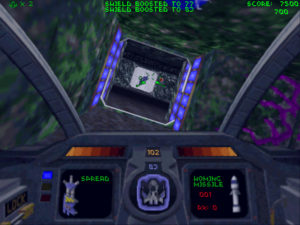 Sadly, some games caused me motion sickness too, especially in the early days of First Person Shooters. Too much Doom or Duke Nukem 3D in one sitting could leave me feeling a little unpleasant. By far, the worst was the day that Descent came out. I played that game for about two hours straight, multiplayer. I was so sick that I was still feeling it the next morning. I have never played another Descent game ever since (not including the awkwardly-branded Descent: Freespace, which I loved and played a ton of).
Sadly, some games caused me motion sickness too, especially in the early days of First Person Shooters. Too much Doom or Duke Nukem 3D in one sitting could leave me feeling a little unpleasant. By far, the worst was the day that Descent came out. I played that game for about two hours straight, multiplayer. I was so sick that I was still feeling it the next morning. I have never played another Descent game ever since (not including the awkwardly-branded Descent: Freespace, which I loved and played a ton of).
However, the improvements in 3D have made those kinds of problems largely go away. I remember getting a little bit motion sick playing some Might & Magic 6 a few years ago, but that might have been something I overcame. I later played some marathon sessions of Might & Magic 7 with no problem, and its graphics were largely the same.
I first started getting interested in the potential of Virtual Reality back … oh, around the same time as the dawn of the first-person shooters. Wolfenstein 3D and Ultima Underworld were big deals, and I was reading lots of cyberpunk novels. I remember fiddling around with some early VR toolkits, which were just waiting for the tech to catch up. It took a long time.
 But now, finally, consumer VR is here, and everybody’s jumping aboard. And… there’s the motion sickness problem. As with my first experience playing Dactyl Nightmare back in the 1990s, ten minutes with the Oculus Rift DK1 a couple of years ago wasn’t super-pleasant. For me, I think it was largely a case of a disagreement between my visual motion and the rest of my body. It was especially acute in that there were no translation sensors, only rotation. So as I was leaning and bobbing – something we do just naturally – I was getting warring perceptions. Within ten minutes, I absolutely needed to quit.
But now, finally, consumer VR is here, and everybody’s jumping aboard. And… there’s the motion sickness problem. As with my first experience playing Dactyl Nightmare back in the 1990s, ten minutes with the Oculus Rift DK1 a couple of years ago wasn’t super-pleasant. For me, I think it was largely a case of a disagreement between my visual motion and the rest of my body. It was especially acute in that there were no translation sensors, only rotation. So as I was leaning and bobbing – something we do just naturally – I was getting warring perceptions. Within ten minutes, I absolutely needed to quit.
The newer versions have proven much better. Then there’s Valve’s HTC Vive, with its emphasis on room-based experiences, is not too bad. But restriction your movements to a few square feet is pretty limiting. My VR fantasies have always involved fast action and extensive exploration. Neither work great for someone with a tendency for motion sickness (or VR sickness).
 Ten minutes of The Void led to no such ill effects. The tracking was good, and it was all based on our real movement. Maybe an hour of it would have cased problems, but ten or so minutes of adventure went just fine. In my mind, this was what Virtual Reality was supposed to be from the get-go … but it requires a small theater full of sensors and non-consumer-level hardware to work.
Ten minutes of The Void led to no such ill effects. The tracking was good, and it was all based on our real movement. Maybe an hour of it would have cased problems, but ten or so minutes of adventure went just fine. In my mind, this was what Virtual Reality was supposed to be from the get-go … but it requires a small theater full of sensors and non-consumer-level hardware to work.
My hope is that as I keep playing around with VR, I will adjust. It’s kind of embarrassing for a long-term gamer like me to get sick from playing games, after all. Especially a guy who was all about first-person 3D before it became a thing, and couldn’t be pulled away from flight simulators even when they were made with flat polygons and wireframe planes. But in the meantime, I’m probably a pretty test case for the vomit-inducing potential of a VR experience. If I can go for 20 minutes with little or no ill effects, it should be good enough for almost anyone. If I can’t, things ought to be reconsidered.
 Between getting acclimated to VR and the continued advancement of the technology (we are in the weird, wild-west early adopter days of the technology still, after all), I suspect that my giant dungeon-crawling, monster-bashing experiences of my fantasies are still within grasp. A half-hour of Vanishing Realms is sadly still enough to make me ill, but it gives me a glimpse of what the future might hold for VR. It’s pretty dang cool right now, but hopefully within the next 3 years it’ll be both cool and comfortable.
Between getting acclimated to VR and the continued advancement of the technology (we are in the weird, wild-west early adopter days of the technology still, after all), I suspect that my giant dungeon-crawling, monster-bashing experiences of my fantasies are still within grasp. A half-hour of Vanishing Realms is sadly still enough to make me ill, but it gives me a glimpse of what the future might hold for VR. It’s pretty dang cool right now, but hopefully within the next 3 years it’ll be both cool and comfortable.
Filed Under: Virtual Reality - Comments: Read the First Comment
The Stigma of Game Engines
Posted by Rampant Coyote on June 9, 2016
 These days, the question of whether or not to use an off-the-shelf game engine as a small, indie developer has largely been settled. The flood of games coming out these days has largely settled that. Sure, there are reasons for rolling your own… especially if you’ve already done so, it works, and is both familiar and can make competitive products. And there are reasons for using an off-the-shelf engine. If it does what you want… or can be modified to do what you want at a lower cost than creating your own… it makes sense.
These days, the question of whether or not to use an off-the-shelf game engine as a small, indie developer has largely been settled. The flood of games coming out these days has largely settled that. Sure, there are reasons for rolling your own… especially if you’ve already done so, it works, and is both familiar and can make competitive products. And there are reasons for using an off-the-shelf engine. If it does what you want… or can be modified to do what you want at a lower cost than creating your own… it makes sense.
These days, the amount of work required to get a base-level feature-set almost – but doesn’t quite – require a pretty solid set of off-the-shelf functionality if you are starting from scratch and need to get to market in a hurry. Making your own UI system may be a fun intellectual challenge (and if you are doing this as a hobby, and that’s what you are seeking, go for it!), but it’s not trivial to make a business case for doing so.
But then there’s this other bit… a stigma surrounding using a pre-built game engine. Rob Remakes wrote about this stigma recently, and that article is probably more worth reading than whatever I might say about the subject.
Now, there are perception issues. And more-than-perception issues. Earlier game engines were not as general-purpose as they claimed to be. I’ve released a game with one of those engines, and I know that all too well. You’d end up either spending your time fighting the engine and rewriting stuff (and then fixing all the problems your changes inevitably cause), or you go with the flow, and end up with a game that bears a bunch of hallmarks of its origin… warts and all. Yeah, that was a problem. You end up with games that “all look alike” when they come from the engine.
 RPG Maker has that problem now, because it’s not a very general-purpose engine, although it has improved quite a bit over the last decade from what I’ve been able to tell. So it’s better… but lets be honest. It’s based on a subgenre of games that were remarkably similar to each other to begin with, and they were all custom engines.
RPG Maker has that problem now, because it’s not a very general-purpose engine, although it has improved quite a bit over the last decade from what I’ve been able to tell. So it’s better… but lets be honest. It’s based on a subgenre of games that were remarkably similar to each other to begin with, and they were all custom engines.
So there’s that. And the associated problem that games built with the same off-the-shelf tools and pieces end up looking too much alike. That’s a real problem. In this world of over-saturated entertainment, your game needs to stand out. If someone looks at your game and says, “Oh, another generic Unreal-based FPS” or “a basic RPG Maker game,” then it’s a problem. That’s probably a more experienced audience – not the ones Rob was talking about – but you don’t want to narrow your audience down to just “inexperienced gamers who don’t know any better.”
From my perspective, I kinda understand the reaction, assuming it’s anything like my own. The problem is that back in the old days, you could perhaps gauge the quality of the game by the quality of the screenshots. If the programmer put together poor netcode, you could guess the rest of the game was likewise junky. If it was a crappy game, the lack of quality was visible throughout. In that way, you could judge a book by the cover.
In this wild, wonderful world of cheap, high-quality game engines, those easy metrics no longer work. A game could look beautiful in screenshots, but only because it’s using all the engine defaults and some quality off-the-shelf content in the screenshots, and the rest of the game is boring, buggy crap. I’ve played those. The game engine branding on the front can act as a warning: “Everything you’ve seen is just a facade. Don’t expect much.”
 I think what that really means is that we’re losing our shortcuts to judgment, and we should get used to the idea. Game engines are a great equalizer, not quite putting the pro and the newb on equal footing, but raising the lower bar of quality. But so far, nobody’s come out with an engine with a single button that says, “Make my game.” Yeah, some folks are doing horrible hack-jobs trying to sell games that are little more than a “starter kit” with the serial numbers filed off. That’s … not so good.
I think what that really means is that we’re losing our shortcuts to judgment, and we should get used to the idea. Game engines are a great equalizer, not quite putting the pro and the newb on equal footing, but raising the lower bar of quality. But so far, nobody’s come out with an engine with a single button that says, “Make my game.” Yeah, some folks are doing horrible hack-jobs trying to sell games that are little more than a “starter kit” with the serial numbers filed off. That’s … not so good.
But aside from that, making a game is still very hard work. The fact that so many more people are doing it because game engines are taking a lot of the scut work out of it? That’s a good thing. Even if it means more crappy games clogging the market. Or being able to be creative and focus on making a game instead of spending all your time working on the engine? That’s also a good thing.
Those who really, really want to do it themselves, from … some facsimile of scratch? Hey, more power to you. I respect that, too. That’s hella fun. But that’s not an automatic mark of superiority. As a developer, I’m kinda interested in how it was made. But from my customer / gamer perspective, I just want something great to play.
Filed Under: Game Development - Comments: 3 Comments to Read
Legacy of the Elder Star – Released
Posted by Rampant Coyote on June 8, 2016
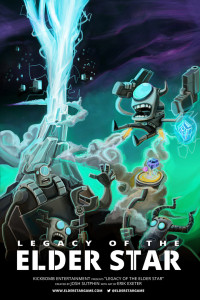 I wanted to shout out this release from a friend of mine: Legacy of the Elder Star, by Kickbomb Entertainment. It’s a shoot-em-up (“shmup”) intended for more casual players. Those of us who go “oooh, that looks like fun!” when we see a bullet-hell game, and then last a whole 30 seconds in those kinds of games. It is designed specifically to take advantage of the mouse. You control your character – the Cosmonaut – as if he was a mouse cursor. There are plenty of unlocks, environments, boss-battles, and fun stuff. I’ve played various demos over it for a long time, but I was very pleased to buy a copy of the final game last night.
I wanted to shout out this release from a friend of mine: Legacy of the Elder Star, by Kickbomb Entertainment. It’s a shoot-em-up (“shmup”) intended for more casual players. Those of us who go “oooh, that looks like fun!” when we see a bullet-hell game, and then last a whole 30 seconds in those kinds of games. It is designed specifically to take advantage of the mouse. You control your character – the Cosmonaut – as if he was a mouse cursor. There are plenty of unlocks, environments, boss-battles, and fun stuff. I’ve played various demos over it for a long time, but I was very pleased to buy a copy of the final game last night.
The game offers unlimited continues, but I like to limit myself to just a couple. Which means I don’t get too far. But that’s okay. I have plenty of time to get to the end… 🙂 But it’s a lot of fun, and a great game to just jump into for a quick break on your PC.
If you are interested, it’s on sale at Steam right now for its launch:
Legacy of the Elder Star on Steam
If you are unsure, check out the gameplay video:
Filed Under: Game Announcements - Comments: Comments are off for this article
Not Another Video Tutorial!
Posted by Rampant Coyote on June 7, 2016
I get that sharing videos on the Internet is the hot thing. Anybody can do it. It’s got more personality, assuming the person narrating the video has a personality to begin with. But for crying out loud… these days, when I’m looking up how to do something that’s a little technical but not too involved, I’m getting to the point where I am desperate to find the ONE well-written tutorial with some pictures.
While sometimes a video is handy, for something like “how do I do XYZ in Unity”, what I really want is a short article I can read and absorb in 5 minutes, not a 40-minute long video I have to sit through to obtain the same information. SERIOUSLY, folks!
And that’s assuming I found a tutorial that can help me. With a written one, especially an illustrated written one, I can scan it and pretty quickly realize whether or not it’s what I need. This is much harder to do with a video tutorial. And what happens if I need to go back and review ONE STEP? I can find it in seconds in an illustrated tutorial, or I can spend 10 minutes hunting through the video tutorial to find that one spot where the narrator talked about it.
Now, there are times where a video tutorial is exactly what I need. And a written tutorial with smaller embedded videos? And maybe some illustrations too? Okay, now THAT is a lot of work, but the best of all possible worlds.
All I can figure is that anything short of a full-length video is harder to monetize, which is why it’s hardly done anymore. That, or it’s a fad. I dunno. It’s beginning to get to the point where I will scroll through all the video search results in preference for something text based.
Filed Under: General - Comments: 4 Comments to Read
Cirsova #2 Pre-Order (via Kickstarter)
Posted by Rampant Coyote on June 6, 2016
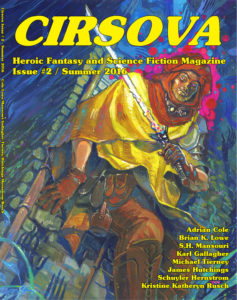 The second issue of Cirsova Magazine, a magazine for heroic fantasy and science fiction, is now available for pre-order. They are using Kickstarter as their pre-order method, but… this is pretty much in the bag. The stories are paid for, the cover art is done, it’s just getting the issue out the door. (This is also how they are handling advertisements… hey, if it works…)
The second issue of Cirsova Magazine, a magazine for heroic fantasy and science fiction, is now available for pre-order. They are using Kickstarter as their pre-order method, but… this is pretty much in the bag. The stories are paid for, the cover art is done, it’s just getting the issue out the door. (This is also how they are handling advertisements… hey, if it works…)
I’m not in this one… I have a story for issue #4 which they intend to release before the end of the year. I enjoyed the first issue, and I’m really looking forward to this second one (Adrian Cole! An essay by Kristine Katheryn Rusch! And More!) While I doubt most of the stories fall into this category, I love that they are looking for pulp-style “sword-and-planet” and “planetary romance” stories. John Carter-esque stuff!
Anyway, if you are interested, visit the Kickstarter page to pre-order.
Cirsova Heroic Fantasy & Science Fiction Pulp Zine: Issue 2
Filed Under: Short Fiction - Comments: Comments are off for this article
Idea Hoarding
Posted by Rampant Coyote on June 3, 2016
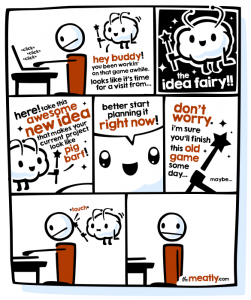 When first setting out in a creative endeavor, there’s a temptation to hoard ideas. It’s easy enough to do… we’ve probably come into it because we had one or two really awesome ideas stuck inside our head that we think is so incredibly awesome and we absolutely HAVE to see them made into reality. But we worry about using them all up at once. Like these are the coolest ideas we’re ever going to have, and we have to make sure we do a perfect job on them, because once they are done, they will be used up. We have to make them count.
When first setting out in a creative endeavor, there’s a temptation to hoard ideas. It’s easy enough to do… we’ve probably come into it because we had one or two really awesome ideas stuck inside our head that we think is so incredibly awesome and we absolutely HAVE to see them made into reality. But we worry about using them all up at once. Like these are the coolest ideas we’re ever going to have, and we have to make sure we do a perfect job on them, because once they are done, they will be used up. We have to make them count.
The reality is… most of the time… once you get engaged in a creative endeavor, and really start focusing not only on the current tasks at hand but on potential future projects, the ideas begin to flow. Big time. Often that super-duper idea that motivated you to commit to actually engaging in the first place may start to pale, especially under the cold hard light of implementation reality. ‘Cuz abstract things that only exist in your imagination as a sort of platonic ideal are almost always better than anything in the real world.
But the point is, if you fully intend to engage in a creative career (whether as a main career or a side-career, it makes no difference) and make that part of your lifestyle, the only kind of idea hoarding you need to do is to save all the tons of ideas that are going to have in some kind of file until you are ready to work on them. You will soon have more than you will ever have time to invest into them. And frequently, the more you work on them to turn them into something real, the more you’ll have.
The creative mind is kind of awesome that way.
(H/T to TheMeatly for the comic)
Filed Under: General - Comments: 2 Comments to Read
Feelin’ Old Yet?
Posted by Rampant Coyote on June 2, 2016
My youngest (of two) daughters graduated from High School today. Her older sister gets married next month (now that it’s June). Both of my daughters were born in the time that I was making games for SingleTrac.
I guess I should now feel old or something. I dunno. Maybe tomorrow it’ll hit me. Right now, I have two geeky daughters who are hitting milestones in their life. Dunno how they got to be so old when I haven’t changed. Well, okay, I changed a little. I guess I’m not really 25 years old anymore. The original Playstation is no longer the hot new machine anymore. And I don’t dress up in armor and beat people up with padded swords on the weekends anymore. Well, not that often, at least.
But I still haven’t beaten Wizardry 7. So some things haven’t changed.
Filed Under: Geek Life - Comments: 5 Comments to Read
Utah Indie Night – May 2016 Edition
Posted by Rampant Coyote on June 1, 2016
For Indie Night on Tuesday, Katie Stone Perez, senior program manager for ID@Xbox, came out to give us a presentation about the program.
I’m gonna say… maybe if I do more research I’ll feel differently, but I went in a little on the defensive / skeptical side, and came out really, really interested. While it is a bit more of a formal approval process than something like the App Store or Steam (now), it’s how you get your games onto the store for both Windows 10 and the XBox One. There are no exclusivity requirements, so you can also release your game on Steam, on other platforms, whatever. And they are currently even providing free dev kits to approved developers (and free licenses to the Unity exporter for Xbox One).
Katie was very friendly, ultra-supportive of indie developers, and very forthcoming with her best answers to the many, many questions people had. She emphasized how much the program has changed since she came on board… it’s not the same thing it was six months ago, let alone at the launch of the Xbox One two years ago. Now… the flip side may be it may be very different six months from now.
Their emphasis now is on supporting indies, making sure they have the same tools and support as the major publishers (as well as the same marketplace, for a change). There are no fees for certification (!!!!!). They really sound like they’ve made some major changes for the better, and are now bending over backwards (or at least intend to) for indies.
I would say that if you are an indie considering launch on both platforms, and you have a game in development that is actually a reasonably commercial concept (meaning: you’d be able to pass through a full-on certification process, as opposed to a cobbled-together fart simulator)… I’d suggest checking it out.
You can also check out the web series Katie hosts, Level Up.
As far as the rest of the meeting… I spent all my time yappin’. I mean, networking. Momentum and Siphon Spirit were there, but I didn’t see what else.
 The big deal, of course, was the Salt Lake Gaming Con going on this weekend, starting Thursday. Due to scheduling conflicts, I won’t be there this time, unless it’s for a brief visit as a regular attendee (possibly on a panel, but that’s still up in the air!). Deli Interactive will be showing the very awesome We Need to Go Deeper, though, which will be a blast.
The big deal, of course, was the Salt Lake Gaming Con going on this weekend, starting Thursday. Due to scheduling conflicts, I won’t be there this time, unless it’s for a brief visit as a regular attendee (possibly on a panel, but that’s still up in the air!). Deli Interactive will be showing the very awesome We Need to Go Deeper, though, which will be a blast.
Also, the excellent beginner-friendly SHMUP Legacy of the Elder Star is going to be on display, and will be officially launching next week! This is awesome. I have played it a bit while it has been in development, and I’m excited to see the final release.
Overall – an excellent indie game night, with a good crowd, and excellent presenter, and a night packed with good information, pizza, smart people, and games. I’m glad I went.
Filed Under: Utah Indie Game Night - Comments: Comments are off for this article
The Dark Side of Fandom
Posted by Rampant Coyote on May 30, 2016
We geeks are passionate about things. That defines us, really. Games. Fictional characters. Star Trek. Star Wars. You name it. That’s why these conventions are attended in overwhelming numbers. For all our reputation for being introverts, we really do love to get together and find other people who share our same love of geeky things. Finding someone else out there who is just as passionate about those strange, often fictional things that we are is a wonderful thing. And being able to share common experiences with other people makes it real.
This is why, in and of itself, I don’t consider “nerd rage” to be a bad thing. Look, we’re folks who are passionate about a subject. Yeah, someone screws with it, people are bound to get annoyed, or downright pissed. Maybe with reason, maybe with just distrust. The latest announcement that Nick Spencer, with Marvel’s permission, has decided to retcon Captain America’s backstory and make him a Nazi and secretly in league with Hydra has me pretty well infuriated. About as infuriated as I and many other Star Wars fans get when I hear the word, “Midi-Chlorian”. At best, it shows a complete disregard for the source material and the fans on the part of the people now charged with producing the new material for the property, even if said people are the original creators. At worst, it shows contempt. At least that’s the reasonable perception on the part of the fans.
Of course, there are other triggers for “nerd rage” that are, IMO, far less valid. Minor screw-ups. Accidents. Missing a deadline. Nerfing an overpowered character class. I can understand fans getting upset. I expect most to be reasonable, and most are. I understand that a certain tiny but significant portion of the world of fandom lacks the intelligence and emotional stability to be rational about it. For these few people who need a remedial class in being a human being, I direct the following:
Death Threats are NEVER OKAY. Never. I don’t care how badly someone slandered your favorite game in an YouTube video, how how much you were waiting for a game’s release which was just delayed. Or how much time you invested in a particular MMO only to get it nerfed or changed. Or that the CEO of a major publisher decided to cancel a series only because few people besides you were buying it anymore. Yes, even if it’s your favorite game, or your absolutely favorite superhero in the whole world.
While we’re on the subject, let’s talk about “SWATting.” This is, in my opinion, making good on a death threat. False 911 calls have gotten people killed. So far, nobody to my knowledge has been charged with attempted murder through the false 911 calls. I think they should. Still, it’s a serious crime, and those who are caught and indicted face real jail time. For all the complaints leveled at trigger-happy cops (sometimes by me), I think the fact that so few of these calls have ended in death or serious speaks volumes about the discipline of the police and the care with which they analyze the calls to distinguish the disgusting “pranks” from legitimate alarms.
It’s fine to be filled with the righteous fire of nerd rage, and hey… I’m all for a well-written (and hopefully entertaining) rant on the Internet. But these sort of things cross the line, and are serious problems. It’s the dark side of fandom and must not be tolerated. It’s not acceptable, and shouldn’t be treated with amusement.
Filed Under: Geek Life - Comments: 2 Comments to Read
The Pulp Fiction Formula Presentation – Tomorrow!
Posted by Rampant Coyote on May 27, 2016
 As previously posted, I’ll be at the Spring Into Books event at the Viridian Event Center tomorrow, Saturday May 28th. I’ll be signing books ‘n stuff. So if you happen to be anywhere around West Jordan, Utah… it’s a free event, and there’ll be lots of local authors and presentations on writing. Plus food trucks, a poetry slam, contests, and so forth. It’ll be a party!
As previously posted, I’ll be at the Spring Into Books event at the Viridian Event Center tomorrow, Saturday May 28th. I’ll be signing books ‘n stuff. So if you happen to be anywhere around West Jordan, Utah… it’s a free event, and there’ll be lots of local authors and presentations on writing. Plus food trucks, a poetry slam, contests, and so forth. It’ll be a party!
I’ll be giving a short presentation called “The Pulp Fiction Formula – Writing Stories that Sell!” at 3:30 in the Parkview Meeting Room 2 (upstairs). If you have no idea what that’s about but are kind of interested… here’s a link to the original text by Lester Dent, AKA Kenneth Robeson, the creator of “Doc Savage.”
The Lester Dent Pulp Fiction Master Plot
 I have some firsthand experience with this. I’ve had several stories published now (and, hey, I’m even an award winner!), but I have some other stories that were finding difficulty finding a home. I’m still learning and improving. I’ve known about this methodology for a while, and while it was interesting, it’s a bit loose and archaic. After all, it was published 85 years ago, and at its heart its just a story structure plus writing advice plus a few odds and ends to give it that popular, pulp-style “punch.”
I have some firsthand experience with this. I’ve had several stories published now (and, hey, I’m even an award winner!), but I have some other stories that were finding difficulty finding a home. I’m still learning and improving. I’ve known about this methodology for a while, and while it was interesting, it’s a bit loose and archaic. After all, it was published 85 years ago, and at its heart its just a story structure plus writing advice plus a few odds and ends to give it that popular, pulp-style “punch.”
But I was inspired by some of the successes of both the old pulp masters, and more modern authors who had embraced it. I met L. L. Muir in January, and she used it to write (short) novels in 3 days. As had SFF legend Michael Moorcock. Although in both cases, they had their own spin on the system… which is as it should be.
So… I used it, whipped out a cyberpunk short story in a week, sent it in… and it sold within 24 hours. Which probably ruined me for life, as I keep expecting responses in really short time. I tried it again, and that story sold on the first try, too. That’s definitely not guaranteed with this system, but I’m a convert. I also used it to write the Frayed Knights story, The Thief and the Chalice.
One of the important points is that pulp fiction was pretty much *the* market for genre fiction back in the early to mid 20th century, but while many pulp stories were flavored by that era, a modern “pulp” story doesn’t have to read like Raymond Chandler or Edgar Rice Burroughs. Or have titles like “The Fish Men of Venus” or “Black Amazon of Mars.” Although, hey, all of the above is kind of awesome. Modern pulp should have the trappings that modern audiences expect… good characterization, modern use of language, modern themes and genres, etc.
Ultimately, it’s just plain fun to write a story this way. I’m looking forward to sharing my thoughts on how it works and how I use it. Hopefully other writers will find it useful. If you are interested and can be there, I’ll see ya at 3:30 tomorrow.
Filed Under: Books, Events, Writing - Comments: 2 Comments to Read
Now Crowdfunding: Mythica 5: The Godslayer
Posted by Rampant Coyote on May 25, 2016
The final chapter of the indie-made Mythica fantasy film series is now in crowdfunding. Like the funding for the previous films, the movie has already been shot. This crowdfunding phase is for post-production goodness: Visual effects, sound, music, that kind of thing.
The upcoming film features Kristian Nairn (Hodor from Game of Thrones), and of course Kevin Sorbo.
If you’ve seen any of the other films, then you probably already know whether or not you are interested in being a backer.
Of course, it’s a little funny backing film 5 when film 4 isn’t technically out yet. I’ve seen it, but I don’t have my copies yet. So far, I still believe that Mythica 3: The Necromancer is the best of the series so far, but of course I’m told this one is going to blow them all away in an epic conclusion.
It’s been interesting to me how the movies have been consistent in character (although, since the first three were filmed at the same time, that makes sense) but have had very different styles. The first movie – A Quest for Heroes – was kind of the cute and very well-done if somewhat generic D&D style fantasy adventure. A quest to save the priestess from some bad guys, battling orcs & ogres & stuff. The second one, The Darkspore, was more epic in scope, and got a little bit darker. It was more of a little indie Lord of the Rings-style quest. The third movie, The Necromancer, was dark, gritty, personal, and a little heartbreaking. The fourth – The Iron Crown – was part comedy. It was a little over-the-top, a rollicking adventure that was fun & lighthearted to balance out the dark angsty feel that had grown from the last two films. It ends with a tough choice being made. Or maybe a couple of tough choices. And in spite of the lightheartedness, it sets things up to be in a pretty rough place for the final film.
I am very pleased with the series. It’s not for everyone. While it is amazing what they’ve pulled off on such a small budget, these are still small-budget films. There’s some inherent cheesiness. But a lot of my friends – especially the D&D players – have also really enjoyed them. I can’t wait to see the final installment this fall.
So if you are interested in being a backer, getting an early release of the film (maybe signed?), getting your name in the credits, whatever… here’s your chance:
Kickstarter for Mythica 5: The Godslayer
Filed Under: Movies - Comments: Comments are off for this article
The Publishers Who Will Destroy Your Career
Posted by Rampant Coyote on May 24, 2016
A publisher can be awesome. Even as an “indie” – having someone else manage the crap you don’t want to may be absolutely worth it. Things are changing, and the role of a publisher is changing along with it. And in many cases, a publisher can really make a tremendous, positive difference in your sales and your career.
The best part of all is that a publisher is no longer semi-mandatory. Back in the old days, direct sales sucked, and it was either sign on with a major publisher or almost nothing. There was no other way to get in front of the mass market. Nowadays, a publisher is optional. They know this. You know it. That means you have the freedom to turn down any deal. And many times, you should. While negotiating a contract may be very stressful for a few days, signing a bad contract can screw you up FOREVER.
Some of the big publishers will bring their power and prestige to bear against you, and will try to get you to sign onerous – perhaps even ridiculous – terms. And they CAN BE SNEAKY. Don’t assume that just because they are a big, well-respected company with a long history of working with people just like you that they won’t put some sneaky language into a contract that will wreck not only this deal, but your whole career. Companies aren’t people – they are made of people who constantly change jobs and put their own mark on things. Maybe a new guy in the legal team has a chip on his shoulder. Maybe the new VP in charge of third-party relations has decided to get more aggressive with contracts and you are the first guinea pig. Who knows?
But that doesn’t mean the little companies can’t be even nastier predators. I have heard some fairly hair-raising stories over the years… both about game publishers and book publishers. There are plenty of good ones out there who are a delight to work with. But definitely treat any contract offered to you with an eye towards how it could be used to hurt you.
There’s an old story over at The Digital Antiquarian about how a clause in Origin’s contract with EA allowed EA to play hardball and nearly destroy Origin back in the 1980s. The use of overstock was the sticking point… something a publisher and distributor would be very familiar with, but a small software developer might be clueless about:
“This provision gives EA the ability to crush Origin, accidentally or on purpose, by over-ordering. Origin can honor the order, only to have it all come back to them along with a bill big enough to bury them when EA doesn’t sell it on. Or Origin can refuse to honor the order and get buried under a nasty breach-of-contract lawsuit. Or they can come back to EA hat in hand and ask nicely if both parties can just forget the whole thing ever happened and continue that third year of their agreement as was once planned.”
But this isn’t just ancient history. We have small “publishers” who sound like they might be the kiss of death to a game studio today, as explained in this recent article:
“Game Publishers in 2016: How to throw your life’s work away in seconds.”
Book publishers are no different. I thought we got away from the bad-ol’-days of the 1990s where publishers liked to create a fiction that an author’s novel was retroactively considered “work for hire” and all the property rights went to the publisher. But no, it can get even worse, even with an established, respected publisher:
Long-Term Thinking: The Non-Compete Clause (Contracts / Dealbreakers)
According to the best-selling and prolific author, Kristine Katheryn Rusch, it’s bad and getting much worse:
“Around 2012, publishers started requiring non-compete clauses in almost all of their contracts, and are making those clauses a deal breaker from the publisher’s side. In other words, the publisher will cancel the deal if you do not sign a non-compete. The choice you are given is this: either you let the publisher control your entire career just because you sold that publisher one book for $5000 or you walk.
“If that’s the choice you’re given, walk. Hell, run.
It’s dangerous out there. Temper your excitement with some well-deserved caution. It’s not paranoia when they really are out to get you. Some of them really are.
Filed Under: Biz, Game Development, Writing - Comments: 4 Comments to Read
The Downsides of the Long Tail
Posted by Rampant Coyote on May 23, 2016
The “Long Tail” is a glorious thing in the modern world. Thanks to global markets, digital distribution, and so forth, things don’t really have to retire from the marketplace. Wanna buy a tested, working, good-condition Commodore 64? It’s out there. Want to buy a copy of a book published in the 1930s? There’s a chance a digital version exists, or that someone, somewhere, has a used copy for sale. A copy of a PC game published more than 20 years ago? There are several places you can go. An indie game or book that maybe only sold a few copies several years ago? Hey, if it’s digital, there aren’t many reasons for the author or studio to remove it. Might as well keep it up for the one-a-blue-moon sale.
As a consumer, it’s wonderful, if perhaps a little damaging to my wallet.
As a creator of digital content, it’s mostly awesome. One of the phenomena of the long tail… the “backlist” as the authors call it… is that a new release boosts the sales of older, related titles (titles in the same series, by the same author / studio, etc.). It means older titles continue to generate a trickle of income which may be insignificant on its own, but collectively may be worth a pretty hefty revenue stream.
But there are a couple of downsides to be aware of:
#1 – Long-term support: The advantage of cutting off the long tail is that you don’t have to worry about supporting ancient products. Let’s face it… if MS-DOS 6.x was still for sale, the insignificant amount of income it generated wouldn’t be worth the cost of supporting the product for Microsoft. While an “as-is” clause in the EULA helps, there are still the costs of supporting the purchase page every time there’s a website update, etc.
#2 – Competition Against Older Titles: This is a biggie, and it’s what I preach to all indies who are hell-bent for creating clones of favorite “classic” titles. The bottom line is: In the modern world, you are still competing against that old, classic stuff. Maybe 10 years ago, you could get away with that to a point, because the classic you are imitating wasn’t available. But that’s not the case now. In a very real way, you are competing with EVERY SINGLE SIMILAR PRODUCT EVER CREATED IN THE HISTORY OF FOREVER. And yes, this means the field gets more and more crowded each month, without the relief the consoles enjoy when they release a brand-new generation of hardware.
Video games have traditionally enjoyed a little bit of an advantage with #2 because they have been so technology-driven. A real-time rendered human character today will probably look and move far, far better than one from 10 years ago. And it probably works on modern systems much better, etc. But especially in the indie realm, this is becoming less true. Since they avoid the cutting edge, they age much better. And even in the AAA arena, we’ve been hitting the law of diminishing returns for a while now with conventional gaming. It’s taking far more powerful technology and far more content development budget to make a noticeable difference. The tech-curve is flattening… which means we’re back to facing #2.
The bottom line there is that we need to keep making better stuff, and different stuff. Titles that are not just a “me, too!” imitation. Not only are you competing against the original, but against all the other “me, too!” derivatives that have ever been released. What makes yours stand out?
Neither of these problems are insurmountable or even all that significant in the face of all the advantages of the “long tail” of distribution. But it rewards those who know how to play to its strengths.
Filed Under: Biz - Comments: 3 Comments to Read
All These Smart Devices Sure Can Act Stupid!
Posted by Rampant Coyote on May 20, 2016
Chapter 1:
I have a great new gaming laptop. With Windows 10, and a solid state boot drive. With an HDMI cable, it connects to my “Smart” TV if I want to play some games on the big screen (rare, but it happens) or play a video off the computer. It also serves the usual purpose of giving a PowerPoint presentation at a convention (something I find happening surprisingly often these days), or run a game demo with a bigger screen. I even take it with me on a couple of short trips to use it as a DVD player (yes, old school) in a hotel with mediocre WIFI. It has a pretty bad downside, though… it doesn’t play audio through the HDMI. That’s … weird, but I adapt.
Chapter 2:
My Smart TV automatically (automagically?) updates. Which is nice, as it can now stream from Amazon again.
My laptop also updates (a few times) with new and improved Windows 10. Yay.
Except… suddenly the two no longer connect. Which was extremely frustrating when I was depending on it at the beginning of the month. WHOOPS! Nothing I tried… for an embarrassingly long time of tinkering with people waiting on me… would work. The computer refused to recognize the TV existed.
Chapter 3:
Cue happy ending! Another update or two later, and suddenly the computer not only interfaces with the TV again, but will play audio over the HDMI cable! Life is good…
… Until I need it again, perhaps.
The Moral of the Story:
Auto-updates are of the devil.
Well, okay. There’s more to it than that. And as a software engineer who understands the true nature of bugs and testing, I recognize that it is a hard problem. Nevertheless, when our technology and our tools become unreliable, there’s a problem. I’m glad the event in Chapter 2 wasn’t a major demo where I’d spent hundreds of dollars on a booth or something. That DOES HAPPEN, sadly.
But when things work one day, and don’t work the next, because of “smart” technology or automatic upgrades, I begin to wonder if how badly those things are named.
Filed Under: Geek Life - Comments: Comments are off for this article
